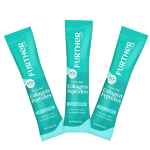Surprising Ways to Add Pickled Foods Into Each Meal, For Gut Health

When I mention pickles, most people I encounter automatically picture a cucumber, maybe cut into spears or coins or as relish, but almost always cucumbers. That’s why I’m here to tell you that there’s so much more!
Incorporating pickles of all varieties is one way you can provide support to your body by directly “feeding” your digestive system with healthy bacteria (probiotics), native yeasts and digestive enzymes. This can help you break down meals easier, thus increasing the levels of nutrient absorption, among other health benefits.
What Exactly is Pickling?
Pickling is technically a method of “cooking” or breaking down food, sometimes to preserve it, and sometimes for more immediate consumption. This breaking down can occur two different ways: pickles can be fermented over time, or cured quickly in acid, such as vinegar or lemon juice. Massaging vegetables with the later will yield the sour, pickled taste you crave in less time than fermentation.
So, What Makes A Veggie Pickle?
Sometimes I pickle raw or lightly steamed veggies by heating a combination of acid, sugar, salt and maybe some spices, then sealing them together in jars. You can find my vinegar-pickled carrots and radishes recipe here. When fermenting, the sour relies on living bacteria or yeast - sometimes added and sometimes naturally occurring - to transform carbohydrates to alcohol. This takes longer than vinegar pickling, and requires a fairly stable ambient room temperature, but the health benefits are huge.
Remember though,it’s not all about veggies. Yogurt, fish sauce, and umeboshi are all ferments, too! I eat all types of these foods to bring a variety of health benefits, texture and flavors. This winter I’ve been pickling hard squashes (red kuri, delicata, buttercup, butternut) as well as rainbow carrots, beets, onions and radishes. I’m also still enjoying the benefits of last summer’s watermelon rind, zucchini and green strawberries.
Here are some other examples of how I get these beneficial “bugs” into my guts!
Breakfast:
Fermented sauerkraut on top of an omelet.
Yogurt or kefir. Make sure to check labels... Some contain more sugar than a twinkie! Personally, I buy plain, grass-fed whole-milk yogurt and add berries or dates to sweeten.
Leftover veggies heated with bone broth and finished with a spoonful of miso once removed from heat.
Lunch:
Vinegar-pickled beets mixed into egg salad.
Umeboshi nibbled with sushi.
Spring rolls loaded with both fresh and various pickled veggies.
Snacks:
Vinegar-pickled carrots and radishes, a chunk of cheese and a handful of nuts.
Prosciutto, pears and fermented green beans.
Dinner
Fermented cauliflower on top of slow cooked pork shoulder.
A (bun-less) burger topped with vinegar-pickled onions, fermented radish.
Dessert:
Kombucha to accompany any meal!
Fermented sweet plums over coconut milk ice cream.
Flourless chocolate cake with crème fraiche or sour cream and berries.
Aiming to incorporate 2-3 servings per day works well for me, but I suggest starting slowly with 2-3 servings per week then build up over a few months.
Note: PLEASE consult with your doctor before making any changes to your diet or medications. The material on this site is provided for educational purposes only, and is not to be used for medical advice, diagnosis or treatment.
























